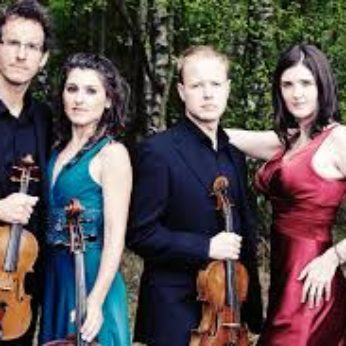Written as a test piece for the 2005 Bordeaux Quartet competition, this work is in six short movements, each varied in shape and texture. After a dramatic, almost violent opening, the first movement gives way to an accented pianissimo molto agitato section with the melody rapidly passed between the instruments. The second movement is inspired by a poem by the Hungarian
poet Ady Endre entititled Nem Jon Senki (Nobody comes). It is incredibly atmospheric, with bursts of speech and intense melodic phrases contrasted with dry eerie unison chords suggesting a complete range of emotions. The Capriccio is spiky to an almost visual degree, whilst the fourth in memory of György Sebok (the Hungarian pianist who died in 1999) is to be played as if coming from another world. The rappel des oiseaux is a study of harmonics. It’s swift tempo and mix of delicate harmonics and glissandi creates a new sound world whilst the last movement demands the use of metal mutes and ends with fading pulsating notes in the viola and cello.
Born in 1926 in the village of Lugoj in Romania, Kurtág was shut off from democracy and the twentieth century’s musical developments for a large part of his life. He spent a quiet childhood enjoying playing piano duets with his mother and when, aged 13, he heard Schubert’s Unfinished Symphony on the radio, he decided he wanted to be a composer. Piano and composition lessons in the larger town of Temesvár led him in search of Bartók and, with some difficulty, hecrossed the border into Hungary in the hope of gaining piano lessons from the great Hungarian composer, whose return from America was expected. This was the autumn of 1945, and alongside the devastation in Budapest brought about by the war, Kurtág was confronted on arrival with the black flag flying on the Liszt Academy building. Bartók had just died in New York. In 1946, Kurtág enrolled at the Budapest Academy of Music to study piano and composition and later studied with Messiaen and Milhaud in Paris. It was in Paris that he made the realisation that one note is almost enough and went on to say that every single note has a reason. Players must understand that. Like Bartók, Kurtág has never taught composition but has coached chamber music and piano with almost unparalleled energy throughout his life.
